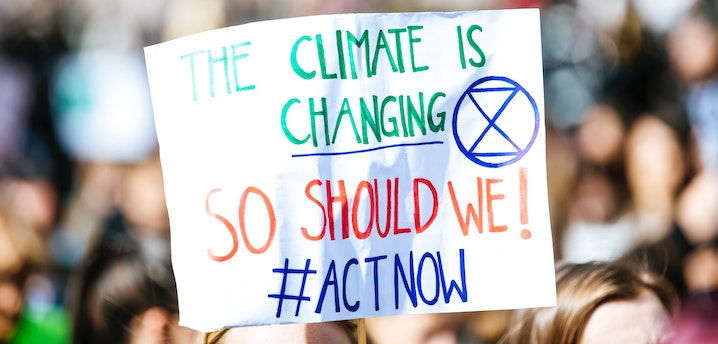
Much hope rests on the COP 26 climate conference in Glasgow. But how does LGPS play a substantive role in achieving “net zero”. Elizabeth Carey writes how support for reporting schemes, such as TCFD, won’t be enough on their own. LGPS will need to back change in the real world too.
With COP 26 just around the corner, many LGPS administering authorities are confronting the “net zero” question or calculating when their funds will reach it. Typically, this exercise is based on a combination of investment beliefs and aggregated information from the underlying managers, or pools, that manage fund assets.
A new industry of consultants has emerged, all promising to help measure carbon dioxide and other greenhouse gas emissions, especially methane (referred to collectively here as CO2e) and categorise them as Scope 1, 2 or 3.
The Taskforce for Climate Related Financial Disclosure (“TCFD”) reporting requirements plus the UK’s revamped Stewardship Code 2020 (with pressure to become a signatory in the not too distant future) gives extra motivation to authorities to count CO2e and set a date by which their LGPS funds will become “net zero” and hence “Paris aligned”.
Net zero
For LGPS funds, what does “net zero” and “Paris aligned” really mean? In most cases, it means a steady decline in reported CO2e of the underlying investments held.
Often that is accomplished by reducing holdings of top CO2e emitters (notably companies in the energy, utilities or mining and materials sectors) or else switching passive allocations to low carbon indices.
Today, companies with the highest reported CO2e footprints bear the brunt of pressure from groups like Climate Action 100+, the Institutional Investor Group on Climate Change and Greenpeace.
When speaking with a collective voice through LAPFF and aligning with other like-minded investor groupings, the LGPS carries clout and can influence corporate behaviour, even government policy.
Many—but sadly not all—high emitting companies have listened and established long-range plans to shift their businesses away from extraction of, or reliance upon, fossil fuels. They talk about “greening” their business models and highlight initiatives focused on the energy transition.
It is in their self-interest to do so if they wish to survive and thrive in a world that has transitioned towards renewable energy generation, clean technology and less CO2e-intensive production methods.
Unfortunately, turning around businesses with large installed asset bases of hydrocarbons or carbon-intensive processes will take time. Short-term tactics like selling down non-core reserves, or projects, or de-merging via spinning off unwanted oil, coal or other “dirty” assets, may allow companies to report declining CO2e exposures on their balance sheets, but does nothing to de-carbonise the global economy.
On the contrary, such actions may be harmful, since the logical holders of such unwanted assets are likely to be privately held companies or state-controlled enterprises, which can largely ignore TCFD, or may only pay lip-service to climate concerns as they maximise near-term revenues.
True de-carbonisation would require putting fossil fuel reserves beyond use by keeping them in the ground. State-sponsored decommissioning schemes would be needed to purchase these reserves into a ring-fenced entity established to hold them in perpetuity. The current owners (sellers) could then reallocate the proceeds towards renewables and other sustainable investments.
One can imagine using hypothecated carbon taxes as a way of creating a synthetic return from such decommissioned assets, which would create a new class of fixed interest instrument that recycled capital from third parties (like LGPS funds) into these decommissioning vehicles. Such a scheme would create assets with potential to de-carbonise the real world, not just an investment portfolio.
Denial
As things stand, the objective of de-carbonising the real economy stands in fundamental conflict with, and the reality of, unabated demand from consumers and producers for CO2e-intensive products like oil, gas, steel, concrete, fertilisers and beef. It’s as though the real world where people drive, build, consume and trade marches on in a state of denial.
We hear increasingly terrifying stories about the effects of climate change, and sometimes experience it directly through floods, fires, polar vortex or hurricanes. Nonetheless, as consumers or producers we resist making those fundamental changes to our local demand patterns that are necessary to de-carbonise our lives if ever we are to reach anything close to “net zero”.
Local authorities are LGPS employers and some are also administering authorities. Councils sit at a unique nexus between supply of capital and grass-roots demand for it. Investment portfolios of the LPGS and their equivalents total over £300BN across the UK.
When speaking with a collective voice through LAPFF and aligning with other like-minded investor groupings, the LGPS carries clout and can influence corporate behaviour, even government policy. Without corresponding leadership on the demand side of the economy, LGPS climate initiatives on the investment side risk being toothless and, ultimately, ineffective.
Relatively few of the hard decisions needed to shift demand patterns toward net zero have been taken: we still heat homes and commercial properties with fossil fuels; we pour concrete and erect (imported) steel infrastructure at an ever-increasing rate; global consumption of the most CO2e-intensive foods (red meat, especially beef) rises alongside demand for vegetarian and vegan alternatives.
Stewardship requires engagement with members and employers in LGPS schemes and, more broadly, across communities.
Influence
Local authorities have extensive influence over decisions that impact day-to-day life in their communities. Council leadership in tackling Covid across communities demonstrates its vital role mustering vital community-wide initiatives. Local authorities can play a similar role now in the climate emergency if they consciously, and intentionally, shift their policies in areas such as planning, licensing, traffic and road use, and other areas, in ways that can actively drive down demand for fossil fuels and emissions-intensive products. For example:
- Banning fossil fuel-based heating systems in all new or refurbished buildings (including residential properties) would send an unequivocal message to businesses all along the construction supply chain that gas and oil heating must be phased out. Just as the law to end internal combustion engines has accelerated the shift towards electric vehicles (EVs), new regulations on installations could accelerate the shift towards more sustainable heating sources.
- Expanded use of ultra-low emissions zones within large cities (like London), and their adoption elsewhere alongside other road charging regimes, would change the economics of car journeys—and ownership. Raising both occupancy and utilisation rates for cars while producing fewer of them (even EVs) would be a huge win for the climate as well as air quality. It would require a serious re-think of each family’s need to own a car.
- Why do certain types of roofs require planning permission for installing solar panels, while others in the same local authority do not? Out-of-date restrictions that impede adoption of renewables or energy-efficiency measures should be scrapped immediately.
- Could local authorities start adding a CO2e surcharge for emissions on products such as beef burgers or outdoor heaters? It might be modelled on other business-specific levies like those on hotel stays or plastic bags. While possibly raising some revenues, a surcharge would send a direct pricing signal to consumers and businesses that CO2e is not a zero-cost externality.
20 October 2021
Online: 10:30-12:30
Room151’s LGPS Quarterly Webcast
COP26 & The LGPS: Institutional ambition for net-zero
Qualifying officers from administering authorities of the scheme can register here.
All enquiries to events@room151.co.uk
Linchpin
Stewardship requires engagement with members and employers in LGPS schemes and, more broadly, across communities. That engagement must extend far beyond putting pressure on the energy and materials industries, which may simply be used as scapegoats for our collective failings (i.e., our unabated demand).
Similarly, focusing on the investment portfolio’s TCFD metrics, or so-called net zero dates (supply of capital), seems academic if local authorities ignore practical actions they could take collectively to shift demand for capital away from CO2e-intensive ways of living, working, building and travelling. Data gathering and creating new reports, while important, risks creating the illusion that it’s job done, all the while distracting from what is really happening on the ground.
Meaningful Glasgow alignment will require local government to make net zero amount to more than counting the investment portfolio’s proverbial brass tacks of CO2e while doing nothing to alter the direction of travel of the Titanic.
Melting icebergs might have saved an ocean liner, but they will confirm the real economy’s failure to transition to a more environmentally sustainable direction of travel.
Acting collectively and intentionally together, and with backing from MHCLG, local authorities have a linchpin role to play in helping to accelerate—and actually achieve—some real net zero goals that are certain to emerge from COP 26 in Glasgow.
Elizabeth M. Carey, CFA, works as an independent advisor and research analyst for local government pension schemes. She spent much of her previous career working in corporate finance and capital markets in New York and London, and subsequently worked as an in-house M&A banker for GE Capital in London. The views expressed in this article are her own.
Photo by Markus Spiske on Unsplash
—————
FREE monthly newsletters
Subscribe to Room151 Newsletters
Room151 Linkedin Community
Join here
Monthly Online Treasury Briefing
Sign up here with a .gov.uk email address
Room151 Webinars
Visit the Room151 channel















